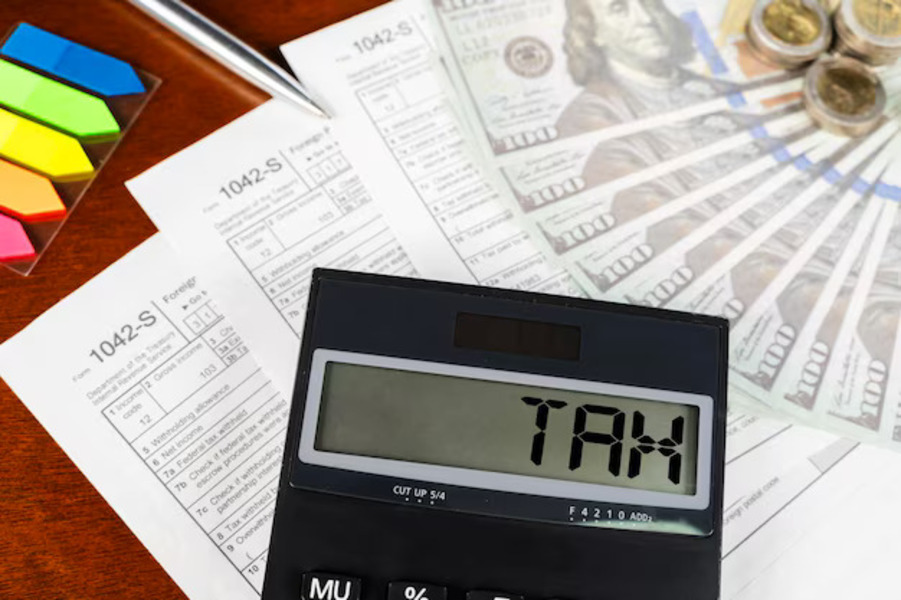Getting a letter from the IRS can be overwhelming, especially when it informs you that you owe money for back taxes. It’s a situation many people face as tax season approaches, whether it’s due to underestimating self-employment taxes or simply being unable to cover what was owed from the previous year.
What makes this more stressful is that IRS back taxes rarely stop at the original amount. Penalties and interest quickly add up, making the debt grow larger and harder to manage. This can feel like an impossible financial burden, especially as the balance continues to rise.But you don’t have to face this alone. There are solutions available to help reduce your IRS tax debt before it spirals out of control. In certain situations, you may even qualify for tax debt forgiveness. Let’s explore some of the options to help you achieve relief from IRS debt.

Is It Possible to Get Your Tax Debt Forgiven?
If you’re struggling with back taxes and feeling unsure about how to ease the financial burden, consider these options that could offer some relief:
Consider Filing for Bankruptcy to Help Resolve Your Tax Debt
For those facing severe financial hardship, filing for bankruptcy might offer a way to discharge certain old tax debts if they meet specific requirements. This option can provide significant relief, but it’s essential to know that only certain tax debts are eligible for discharge through bankruptcy.
Here are the key conditions for tax debt to qualify for discharge:
- Income tax debts must be over three years old.
- The taxes must have been filed on time.
- Non-fraud provisions must be met.
However, not all tax debts can be wiped out through bankruptcy. Recent larger balances, unpaid payroll taxes, and fraud penalties are generally not eligible. Additionally, bankruptcy can temporarily impact your credit score, so it’s crucial to weigh the pros and cons before proceeding with this option.
Take Advantage of the Offer in Compromise Program for Tax Relief
Another option to explore is the IRS Offer in Compromise (OIC) program, which allows you to settle your tax debt for a reduced lump sum payment. This program can provide significant relief, but the IRS requires proof that your income and assets are insufficient to cover the full amount, even with a payment plan.
Here are the key factors the IRS considers for OIC eligibility:
- The settlement amount must be the most the IRS can reasonably expect to collect within a set timeframe.
- Your income, expenses, asset equity, and future earnings potential will all be reviewed.
- Strict documentation of financial hardship is required for approval.
Even if your OIC is approved, there’s an important condition—you must remain compliant with all future tax obligations. Staying on top of your taxes is essential to keep the agreement in good standing.
Take Control of Your Finances with Professional Tax Relief Services
Handling the complexities of back taxes can be overwhelming, which is why many people turn to professional tax relief services to manage their IRS debt. These services take on the heavy lifting, from handling all the necessary paperwork to communicating directly with the IRS on your behalf. This can provide you with much-needed relief and peace of mind.
Here’s what you can expect from a trusted tax relief service:
- A team of tax professionals, including former IRS agents, who will thoroughly review your financial situation.
- Access to a variety of tax relief programs you may qualify for to reduce your tax burden.
- Negotiation with the IRS to potentially reduce or forgive a portion of what you owe.
While these services can be incredibly helpful, it’s important to watch out for warning signs. Be cautious of companies that make unrealistic promises like “settle for pennies on the dollar.” Reputable firms will offer a free initial consultation to assess your options, and if you encounter one asking for payment upfront, it’s wise to be skeptical.
Set Up a Personalized Payment Plan to Manage Your Tax Debt
While a payment plan won’t eliminate your tax debt, it can be a practical path to paying off what you owe in manageable installments. For many, setting up a payment plan with the IRS is the most straightforward way to deal with significant tax debt. The IRS offers short-term payment plans that last up to six months and long-term installment agreements that can extend over six years or longer if necessary.
Here’s what you need to know about IRS payment plans:
- They don’t offer tax debt forgiveness, but they stop future penalties from piling up.
- You can potentially save money over time by preventing your debt from growing further.
- Payment plans are tailored to your financial situation, making them more affordable.
To get approved, you’ll need to provide the IRS with documentation of your income, expenses, and assets. Once on a payment plan, you must remain current with your taxes and comply with the agreed schedule. This approach allows you to pay off your debt at a steady pace without added pressure.
Apply for a Currently Not Collectible (CNC) Status to Relieve Tax Pressure
If you’re genuinely facing financial hardship and can’t pay anything toward your tax debt, you have the option to request a Currently Not Collectible (CNC) status. While CNC status doesn’t erase your debt permanently, it provides temporary relief by pausing IRS collections and preventing additional penalties and interest from adding up.
To qualify for CNC status, you need to meet specific IRS criteria:
- You must demonstrate that your household income is insufficient to cover basic living expenses.
- You should have limited asset equity to satisfy your tax liability.
- The IRS will require documentation of your finances, including monthly income, expenses, and proof of hardship.
Though CNC status offers only a temporary solution, it can give you the breathing room you need to manage your financial situation without the immediate pressure of IRS collections.
Conclusion
Dealing with growing tax debt can be incredibly stressful, but knowing there are relief programs and professional services available to help settle or restructure what you owe can bring much-needed peace of mind. You don’t have to face this challenge alone—there are solutions tailored to your situation.
By exploring all your options, you can take control of your financial future and choose the path that best suits your needs. Whether it’s settling your debt or working out a manageable payment plan, the right approach can help you resolve your tax burden and move forward with confidence.
Frequently Asked Questions
Q: What is tax debt relief, and how can it help me?
A: Tax debt relief refers to programs and services designed to help individuals reduce or manage their tax debt with the IRS. It can include payment plans, offers in compromise, or other solutions to make repayment more manageable.
Q: Can the IRS forgive my tax debt?
A: In certain cases, the IRS may forgive a portion of your tax debt through programs like the Offer in Compromise, where you settle for less than you owe. Eligibility depends on your financial situation.
Q: How do I qualify for an IRS payment plan?
A: To qualify for an IRS payment plan, you need to provide proof of your income, expenses, and assets. The IRS will work with you to create a manageable monthly payment plan based on your ability to pay.
Q: Will enrolling in a tax relief program affect my credit score?
A: Enrolling in a tax relief program, such as a payment plan or offer in compromise, generally does not affect your credit score. However, filing for bankruptcy or having a tax lien placed on your account can have an impact.
Q: How long does it take to resolve tax debt with the IRS?
A: The time it takes to resolve tax debt varies depending on the method used. Payment plans can last several months to years, while an Offer in Compromise may take several months to get approved.


Recent Comments